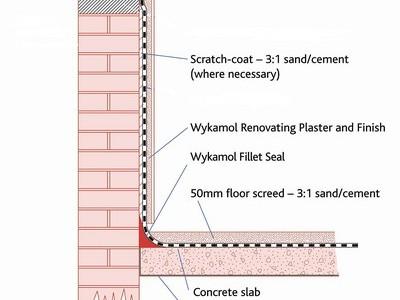My front room (Victorian house) has a concrete floor with what looks like plastic dpm underneath. I've got some problems with penetrating damp in the walls so am going to use sulphate resisting backing render with aquastop tanking ontop.
My question is about the floor edge. I have some fillet seal (wykamol) that i was going to use but looking at diagrams, normal practice is to do this before the floor goes in. Any recommendations on this? Also the edges of the floor in a few places appear to have slightly damp patches near the wall joint is there anything i can use to seal these areas?
Thanks for any help.
My question is about the floor edge. I have some fillet seal (wykamol) that i was going to use but looking at diagrams, normal practice is to do this before the floor goes in. Any recommendations on this? Also the edges of the floor in a few places appear to have slightly damp patches near the wall joint is there anything i can use to seal these areas?
Thanks for any help.


